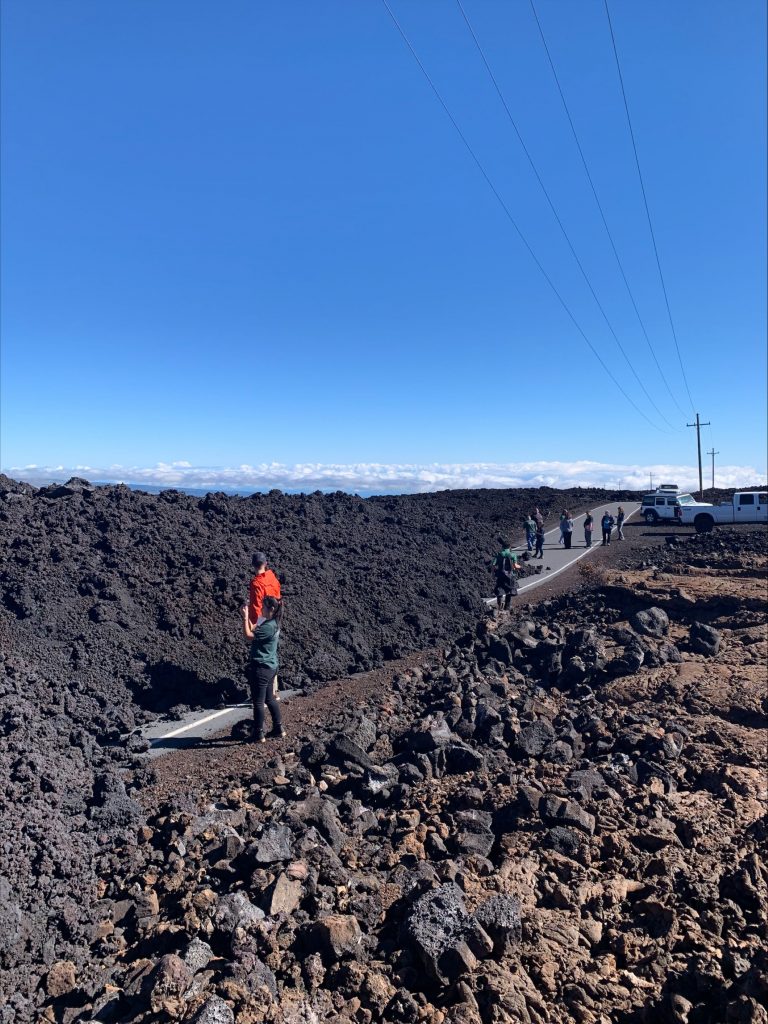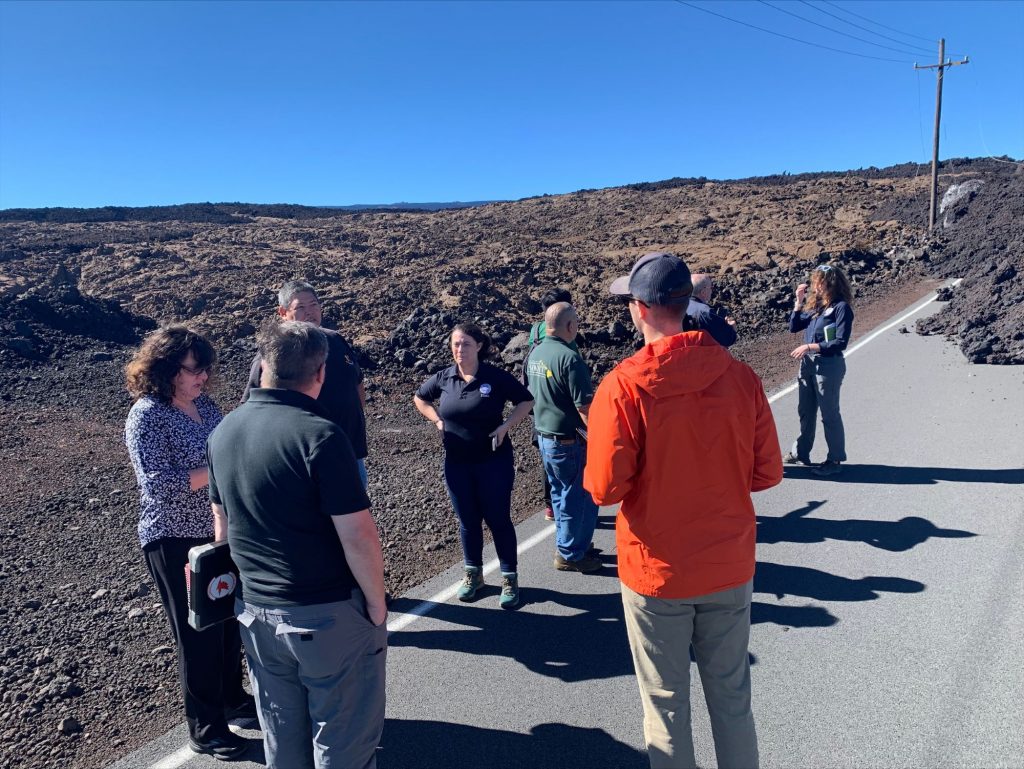Federal funds sought for Mauna Loa eruption’s damage, expenses
While Hawai‘i County was spared from a huge disaster when Mauna Loa’s lava march toward Daniel K. Inouye Highway stalled just 1.7 miles away, the volcano’s first eruption in 38 years did cause damage and expenses.
The State of Hawai‘i is seeking a federal disaster declaration to try to recoup some of those expenses and fix damage to public infrastructure, mainly Mauna Loa Observatory Road, on the volcano’s unpopulated northeast flank.

Hawai‘i Gov. Josh Green on Jan. 20 — the same day it was presented to him — signed off on the state’s request for a presidential major disaster declaration for Hawai‘i County under the Public Assistance and the Hazard Mitigation grant programs, according to Adam Weintraub, communications director for the Hawai‘i Emergency Management Agency.
The Federal Emergency Management Agency’s preliminary damage assessment, which covers the period form the start of the eruption Nov. 27 to Dec. 16, is $1.75 million — with $850,000 in estimated road and bridge damage expenses and slightly more than $900,000 in emergency protective measures.
The state’s request letter noted it does not agree with FEMA’s estimate.
“The state believes the FEMA estimate did not fully account for the costs of repairing the Mauna Loa Observatory Road, which would be conducted at high altitude in a remote location, requiring additional precautions and measures to protect workers and support needed equipment,” Weintraub said.
The state, based on historical costs and other information, estimates the cost of the road repair at $3 million, for a total estimated disaster declaration of $3.9 million.
A disaster declaration “could take weeks if not months for a decision,” said Luke Myers, administrator of the state’s emergency management agency.
Weintraub said if President Joe Biden signs off on the disaster declaration, FEMA typically will reimburse up to 75% and the balance is paid by state and local funding.

The request for a federal disaster declaration comes on the heels of a one-day, onsite inspection Jan. 5 by an 11-person team of state and FEMA officials of damages and impacts caused by the eruption.
While there were multiple threats, including ashfall, gas emissions and earthquakes, the damage and impacts the team inspected were primarily from lava inundation.
Fortunately, while the Mauna Loa eruption and its resulting lava flows damaged some public infrastructure on the gentle slopes in the volcano’s Northeast Rift Zone, it posed little threat to life and property. The primary lava flow stalled — before reaching the island’s primary route between the west and east side — after lava broke out at a higher elevation and began to decline in volume.
“We were relatively lucky as a state and county and as a whole community what was actually impacted by the lava,” Meyers said. “There were two main transportation infrastructures up on the mountain that were impacted and those were our primary areas to review and assess.”
Specifically, the inspection team looked at damage to roads reported by the Hawai‘i Department of Land and Natural Resources and some emergency protective measures taken during the eruption. It’s estimated that just more than a mile of road was covered by lava.
“For the several pieces of infrastructure in the path of Mauna Loa, those roads will have to be further assessed,” Meyers said. “Right now, the service function of the roads, there is no use of them. So impacts to that infrastructure are definitely on the high end.”
There also were some powerlines at the top of Mauna Loa Observatory Road consumed by lava. The inspection did not cover any state Land Department assets.
In response to the eruption, Hawai’i County received support from several agencies, including Hawai‘i National Guard personnel to assist with traffic control and security in the lava viewing area on Old Saddle Road and state emergency management agency personnel who helped at the county’s emergency operations center.
The team had 30 days after the eruption ceased to get its report to Green so he could make a decision on whether to request a federal disaster declaration.
“We were very fortunate that the lava came down the Northeast Rift Zone, into the middle of the saddle, and only really impacted a couple of transportation infrastructures,” Meyers said.
Sponsored Content
Comments
















